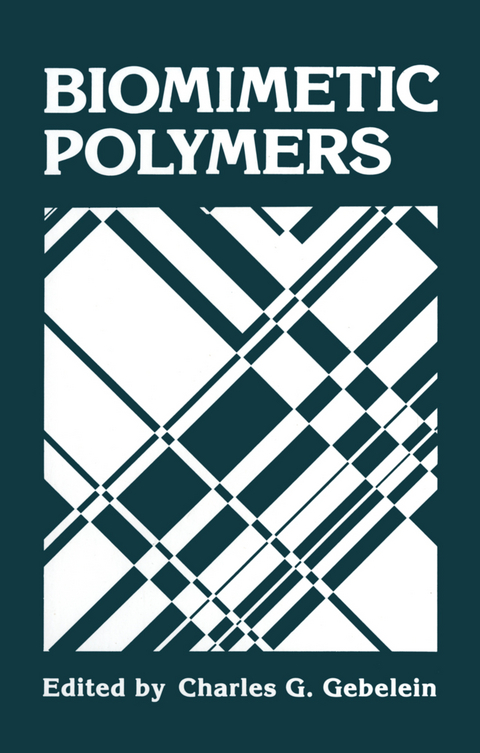
Biomimetic Polymers
Springer-Verlag New York Inc.
978-1-4612-7913-6 (ISBN)
The term biomimetic is comparatively new on the chemical scene, but the concept has been utilized by chemists for many years. Furthermore, the basic idea of making a synthetic material that can imitate the func tions of natural materials probably could be traced back into antiquity. From the dawn of creation, people have probably attempted to duplicate or modify the activities of the natural world. (One can even find allusions to these attempts in the Bible; e. g. , Genesis 30. ) The term "mimetic" means to imitate or mimic. The word "mimic" means to copy closely, or to imitate accurately. Biomimetic, which has not yet entered most dictionaries, means to imitate or mimic some specific bio logical function. Usually, the objective of biomimetics is to form some useful material without the need of utilizing living systems. In a simi lar manner, the term biomimetic polymers means creating synthetic poly mers which imitate the activity of natural bioactive polymers. This is a major advance in polymer chemistry because the natural bioactive polymers are the basis of life itself. Thus, biomimetic polymers imitate the life process in many ways. This present volume delineates some of the recent progress being made in this vast field of biomimetic polymers. Chemists have been making biomimetic polymers for more than fifty years, although this term wasn't used in the early investigations.
Biomimetic Reactions Using Organized Polymeric Supports.- Application of Thin-Film Biocatalysts to Organic Synthesis.- Polymeric Biomimetic Catalysts Based on 4-Diallylaminopyridine.- Synthesis of Platinum and Titanium Poly(Amino Acids).- Zeolites as Inorganic Analogs of Biopolymers.- Catalytic Antibodies.- Generation of Catalytic Activity by Protein Modification.- Heparin, Heparinoids and Heparin Oligosaccharides: Structure and Biological Activities.- An Immobilized Protamine System for Removing Heparin in Extracorporeal Blood Circulation.- Poly(Vinyl Alcohol)-Polyelectrolyte Blended Membranes-Blood Compatibility and Permeability Properties.- Condensation of Bioactive Compounds into the Membrane Compartment by Conjugation with Synthetic Polypeptides.- Polyphosphates Mimicing Structures and Functions of Teichoic Acids.- Polyphosphates Modeling Elements of Nucleic Acids Structure.- Nucleic Acid Analogs: Their Specific Interaction and Applicability.- Potential Medical Applications of Nucleic Acid Analog Polymers.- Growth Rate Increase in Normal Wistar Rats Catalyzed by Insulin.- Contributors.
| Zusatzinfo | 306 p. |
|---|---|
| Verlagsort | New York, NY |
| Sprache | englisch |
| Maße | 170 x 244 mm |
| Themenwelt | Sachbuch/Ratgeber ► Natur / Technik ► Garten |
| Naturwissenschaften ► Chemie ► Anorganische Chemie | |
| Naturwissenschaften ► Chemie ► Organische Chemie | |
| Naturwissenschaften ► Chemie ► Physikalische Chemie | |
| Technik ► Maschinenbau | |
| ISBN-10 | 1-4612-7913-5 / 1461279135 |
| ISBN-13 | 978-1-4612-7913-6 / 9781461279136 |
| Zustand | Neuware |
| Haben Sie eine Frage zum Produkt? |
aus dem Bereich


